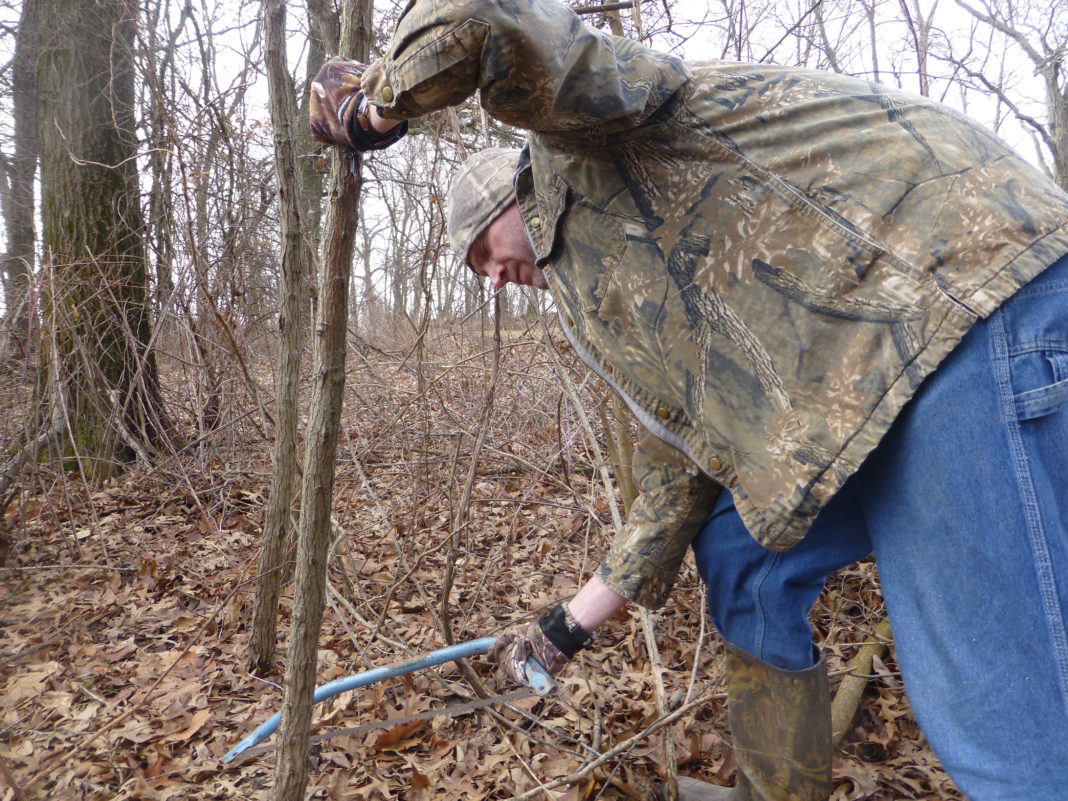Bowhunters are always able to learn about the deer they hunt and find ways to become a better hunter. If you ever get to the point you think you have deer and deer hunting figured out, something is bound to happen that will cause you to rethink what you know, or think you know as a deer hunter.
Some things are out of our control, but there are things we can do to prepare for the next deer season. This would be a good time to seek permission to hunt on new ground, or maybe your equipment needs some modifications or upgrades. While it is still fresh on your mind, now is the time to think about the deer season that just ended, and to think of what you can do to make the next season better. No matter how successful the past season was, there is always room for improvement.
Even though the deer season has just come to an end, now is the time to get out and scout next year’s deer. By the time you are done, you should have a good mental image of how the woods will look next fall.
Trails are easy to locate, rubs are still visible, scrapes can still be found, and deer will start shedding their antlers soon. As long as food sources do not change much, changes to the landscape, an outbreak of EHD or other disease, everything you learn now should remain close to the same next year.
Not only does scouting help you locate deer and learn their routines, it also helps you build confidence. Being able to have confidence to know that you are hunting in the right spot, and that a deer could show itself at any minute will allow you to stay alert and observant of your surroundings, as well as stay in your stand longer.
Throughout the summer, use trail cameras and glass with optics from afar. As the season gets closer, you will have to put your boots on the ground to make sure everything is what you thought and hang or move stands accordingly.
Do not be a hunter that leaves his bow in the closet until the week before the season starts. You need to practice with your archery gear all year-round.
Practice target shooting from further distances than what you would at an animal. If you would not shoot further than 25 yards at a deer, practice out to 40 or even 50 yards. If you can consistently hit the bullseye at 50 yards, a 20-yard shot at a deer’s vitals should be second nature.
Something I see too many hunters do is to practice only in the summer wearing warm weather gear; this is not realistic of a Midwest whitetail season.
To get the most out of your practice sessions, you need to practice a few times with your entire winter gear on. This will help ensure that your clothing does not interfere with your shot and that you can pull your bow back while wearing the extra clothing. Make sure at least one of those sessions is from an elevated platform or ground blind.
If you plan on asking permission to hunt on new property, do so as soon as possible.
Even though most prime hunting land is gobbled up by outfitters or other hunters as soon as it is available for lease, it is still possible to gain permission to hunt by simply knocking on doors.
Not every landowner leases their ground, even though it might seem that way at times. Dress respectfully and talk politely each time you speak with a landowner. Be willing to show your hunter education card, up to date hunting license, and be willing to leave the landowner with your contact information in case of problems or questions.
Do not get discouraged; you will get told no at times, but eventually you will get the answer you want. When you are turned down, thank the landowner for his or her time and move on to the next one.
Keep a plot book handy. When you find a piece of property that you are interested in hunting on, it will be easy to figure out who owns the land. Talk with delivery drivers, rural mail carriers, game wardens, and sporting goods shop owners. These people talk with landowners often and might be able to give you a good lead to available hunting ground.
Take down all of your treestands and steps soon after the season is over. Do this even if you plan on hunting from the same tree next season.
Inspect every stand carefully. Look for nuts and bolts that are rusty and weak that should be replaced, or loose nuts that need tightened. You might even have to purchase replacement seat cushions in case hungry squirrels got ahold of yours. Check the cables for frays or weak spots. If a stand can’t be fixed, throw it out and purchase a new one.
Carefully look over your safety harness, tree strap, lineman’s belt, and your lifeline. If they are weak or outdated, buy new. Steps can weaken over time. Check each step for weak spots. Removing the steps also protects the tree.
What I have described are some steps I take during the off-season. By doing this, I am a better hunter, and even more important, a confident hunter.









![The Best Deer Camp Chili [VIDEO] Deer Chili Ingredients, Tomatoes, Chili Spices](/wp-content/uploads/2015/10/Deer-Chili-Deer-Camp-Recipe-218x150.jpg)








![How to Call Elk Early in the Season [VIDEO]](/wp-content/uploads/2016/08/byers003-218x150.jpg)




![Idiots Disturb Hunter: How Would You Have Handled It? [VIDEO]](/wp-content/uploads/2015/10/DSC00110-e1474487693878-100x70.jpg)
![Albino Buck Shocked to Shed His Antlers [VIDEO]](/wp-content/uploads/2015/10/AlbinoDeer-100x70.jpg)